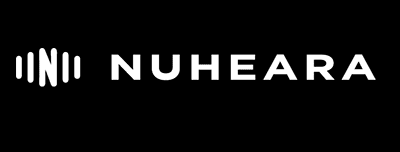By Stephen O. Frazier
“Wow! I can really hear now!” That was what Russ Conger shouted when he first attended a service at his Oshkosh, Wisconsin church, to the delight of the congregation. It was the first time he experienced the church’s hearing loop while wearing his new telecoil-equipped hearing aids. Othel Moore didn’t shout when she experienced the same thrill with the new loop system in her Albuquerque, New Mexico church.
“It’s fantastic—I can hear everything going on,” she said. Before its installation, even while wearing her hearing aids, “I never heard anything in the service.” After her first experience with a looped meeting room, Judy Wilson in San Diego said, “The meeting the other night showed me how miraculous they (t-coils) are. What a revelation that speech in a meeting setting could sound that clear to me!” Those are typical reactions for telecoil-equipped hearing aid wearers the first time they visit a “looped” facility where they previously found it difficult (if not impossible) to hear the proceedings.
More people are having similar experiences thanks, at least in part, to the Hearing Loss Association of America’s (HLAA) volunteer Get in the Hearing Loop (GITHL) campaign, currently celebrating its tenth anniversary. Loop Wisconsin in Oshkosh and Albuquerque’s Loop New Mexico predate GITHL, but they have now been joined by over 50 known looping campaigns in over two dozen states. Many of these are affiliated with HLAA, but several are independent like the Hearing Well Club’s Let’s Loop Orange Country, Loop Minnesota, or Let’s Loop Arkansas.
Many of the nation’s local Sertoma clubs also participate in a similar hearing loop campaign called A Sound Investment. Hearing care professionals from Faull Audiology in Jacksonville, Florida, to Ko’olau Audiology & Hearing Aid Services in Kailua, Hawaii, to an untold number of offices in between, publicize hearing loops and telecoils on their websites and in their practices. With this added support, the looping movement appears to have reached critical mass.
Availability of Telecoils is Declining
That being said, both hearing aid buyers and sellers are discovering that it’s become a little harder to find hearing aids that offer telecoils. Back in 2017, listings in the Consumer’s Guide to Hearing Aids[1] indicated that 83% of the hearing aids capable of containing telecoils contained or could be fitted with the technology. The figure for the 2020 Guide has shrunk to 75%, but that is not a completely accurate picture of the situation. Excluding completely-in the-canal (CIC) models—called “invisible hearing aids” by the Guide— hearing aid makers reported a much smaller number of hearing aid models capable of containing telecoils in 2020; 235 compared to 349 in 2017. Of those, only 176 models offered a telecoil option compared to 291 three years earlier, a drop of 40%.
Rexton was the company losing telecoil capability at the highest rate, with the percentage of models offering a telecoil option going from 100% to 46%. All 20 of the models listed in the 2017 Guide had a telecoil option, but only 13 of the 28 models listed in 2020 offer that feature.
When questioned about this, Andrew Arnold, director of corporate communications for WS Audiology, said, “There has been a temporary dip in the number of Rexton hearing aids equipped with telecoil for a couple of reasons. The first is that since the acquisition of the Siemens portfolio by Sivantos, the focus was on the newly-created Signia brand, and so most development resources were focused there. The well-known Siemens brand could only be used until the end of 2019, and we needed a strong inheritor of the Siemens legacy. As you know, the number of telecoil-equipped Signia hearing aids has risen.”
He went on to say that this was a temporary situation for Rexton and that, “We will continue to plan for telecoil in our coming product launches and the number of hearing aids with telecoils will increase.” In the case of Signia, though, the number of models offering telecoils went from 14 to 16 but, in both instances, the telecoils were optional rather than standard, and, because many new models had been introduced, the percentage of models that included telecoils went from 82% to 53%.
Beltone, Bernafon, and Phonak recorded a substantial reduction in the number of telecoil-capable models. In a LinkedIn post on this topic, a Bernafon executive said, “Bernafon AG acknowledges that the option of a manual telecoil is a key technology that is useful to many hearing aid users.” The company, however, has made telecoils an option rather than standard in the six telecoil-capable hearing aid models listed for 2020, while three years ago they were standard in all 14 models listed. With the growing availability of “invisible hearing aids” and the discontinuation of many in the ear (ITE) or behind-the-ear (BTE) models, the percentage of telecoil-capable hearing aids has been reduced from 71% of all hearing aid models listed in 2017 to just 58% today, and there are 115 fewer telecoil-capable models on offer from manufacturers.
Even though nine states now have a regulation that requires that a client be told about telecoils prior to being fitted with hearing aids, in many states audiologists and hearing instrument specialists reportedly fail to even tell clients about the technology. In those states where they must do so, some will reportedly discourage including telecoils in hearing aids about to be purchased. Upon hearing a request for telecoils, some providers reportedly tell clients they have no need for telecoils because they will have Bluetooth. The latter is a great technology and dramatically increases the functionality of hearing aids, but it’s a supplement, not a viable alternative to telecoils and loops, except in those instances where a telecoil is included in a Bluetooth streamer. Bluetooth is not currently capable of connecting members of a congregation to the person speaking from the pulpit or relaying the dialogue from actors on stage in a theater to multiple members of the audience. It cannot, without a remote mic, connect a passenger to the driver of a New York City taxi, but the loops in all new cabs in the city can.
Among the hearing aid brands listed in the 2020 Consumer’s Guide to Hearing Aids, 11 offer telecoils as either included or available in 100% of their hearing aid models capable of containing a telecoil. For the others, the percentage of models available with telecoils varies from 17% to 85%. Phonak and Audina are listed as having the most telecoil-equipped hearing aid models, with 21 models each. However, in both instances, many are optional rather than standard. Unitron, Widex, and Signia come next, with numbers in the teens.
While Rexton, Phonak, Beltone, and Signia have reduced the percentage of hearing aid models that offer telecoils, other brands continue to support the technology. When ReSound introduced its Quattro 62 model, it did not offer telecoils, but inquiries from both consumers and hearing care providers convinced them to include telecoils, upon request. Consequently, ReSound continues to offer a telecoil option in all models large enough to accommodate one. At Starkey, Dave Fabry, Chief Innovation Officer, said, “We remain strongly committed to providing telecoil solutions for our latest custom, behind-the-ear (BTE), and receiver-in the-canal (RIC) products. Telecoils provide convenience, ease-of-use, and universal compatibility for adults and children to connect with assistive technology.”
Excluding “invisible hearing aids,” what follows are the hearing aid brands and the number of models offered by each that are listed in the 2020 Consumer’s Guide to Hearing Aids as being large enough to contain telecoils, as well as the number actually offering that option.
Brand Number of Telecoil equipped
models or optional
Audibel 6 6
Audifon 4 4
Audina 24 21
Beltone 13 11
Bernafon 6 6
General Hearing 6 1
Microtech 6 6
Miracle Ear 3 3
NuEar 6 6
Oticon 4 4
Persona 7 7
Phonak 30 21
ReSound 2 2
Rexton 28 13
RX Ears 3 2
Signia 30 16
Sonic 6 6
Starkey 6 6
Unitron 22 19
Widex 23 16
Total…………. 235 176 = 75%
Invisible models 67 0
Grand total 302 176 = 58%
Jim Wilson of Consumer’s Guide reports that big-box stores like Costco and Sam’s Club have chosen not be included in the Guide’s statistics, as well as companies like Otofonix and Zounds. Otofonix does offer one model of hearing aid with telecoils and one of the eight models offered by Zounds features the technology. At one time, the mid-priced Air BTE model from MDHearingAid featured telecoils, but they no longer offer that feature, nor do any of the four other models in their portfolio.
At Costco, almost all dispensed hearing aids can either come with a t-coil or use a streamer to convert a hearing loop’s electromagnetic signal to Bluetooth and send it on to the hearing aids. Early models of the company’s private-label Kirkland Hearing Aids offered telecoils until the introduction of their short-lived, Sivantos Signature 8 model. The Signature 9 replacement model made by Sonova again offers buyers the telecoil option. Furthering their commitment to telecoil technology, Costco had Juliëtte Sterkens, AuD, the national HLAA expert on the technology, present a workshop at a national continuing education conference to further educate their dispensers on loop technology. They have also revised their mandatory testing and fitting protocol to include telecoils as part of the needs assessment and instrument selection discussion with Costco members.
Related article: Telecoils and Hearing Loops: An Interview with Juliëtte Sterkens, AuD
The Lubbock, Texas-based Livingston Hearing Aid Center has gone even further. They are in the process of installing hearing loops in all 90 of their offices in five southwestern states and have developed a comprehensive training program that not only trains their staff on the fitting of telecoil-equipped hearing aids, but also encourages them to become advocates for the installation of hearing loops in their community. To raise awareness of this initiative, the HLAA Get in the Hearing Loop logo and some of their other graphics are regularly used in the firm’s multi-page newspaper inserts, TV advertising, and website.
Availability of Loops On the Rise
While the number of hearing aid models offering a telecoil option has shrunk, the availability of venues around the country that feature hearing loops has grown by leaps and bounds. New York’s LaGuardia Airport recently joined airports in Atlanta, Detroit, Minneapolis, Seattle, Phoenix, and a growing list of other cities that offer the technology at departure gates or elsewhere in the terminal. JetBlue has recognized the value of neckloops and offers them as an alternative to earbuds on their international flights. New York’s Metropolitan Transit Authority (MTA) has recently joined San Francisco’s Bay Area Rapid Transit (BART) in its decision to include hearing loops in all new rail cars, and the US Access Board is even considering a recommendation to require loops in all new or refurbished rail cars. Over 600 of the New York City subway fare/information kiosks have loops that allow those with telecoils to hear the attendant over the roar of trains passing through. Hundreds of performance spaces from Broadway theaters, to the elegant old Grand Opera House in Oshkosh, Wisconsin, to the tiny Adobe Theater in Albuquerque, to the landmark World Theatre in Kearney, Nebraska (approximate population 34,000) are looped. An HLAA looping advocate is compiling a list of known performance spaces that is pushing the 300 mark.
Loop America’s Loop Locator (https://time2loopamerica.com/loop-locator/) and Otojoy’s LoopFinder (https://loopfinder.com/) contain lists of thousands of known looped venues nationwide and the “location aware” LoopFinder app for smartphones offers suggestions of nearby venues with hearing loops for travelers.
From the 12,000-seat Breslin Center at Michigan State University to individual lecture halls at the University of Iowa, educators are getting their schools in the hearing loop. Retail chains like Kinney Drugs and Wegmans Food Markets have installed counter loops to provide confidential, effective communication access to their customers. The US Supreme Court, the US Congress, various state legislative chambers, and many city council rooms have gotten “in the loop.” In Albuquerque, the city council installed a loop to supplement an FM system so that those with telecoils could just push a button on their hearing aid instead of removing their hearing aids and donning a borrowed FM receiver and earphones. Many places of worship now offer hearing loops while many others have added neckloops to their old FM or infrared assistive listening system (ALS). Most movie theaters now offer neckloops as an alternative to earphones for use with their ALS.
What’s to Come?
With Sivantos (formerly Siemens) and Widex merging to form WS Audiology and Sonova Holdings joining forces with GN ReSound, what had been seven major players in the hearing aid wars now shrunk to five. How those consolidations and the entry of OTC competition impacts the availability of telecoils, remains to be seen. For example, Otofonix offers a telecoil option in some devices that could be expected to be marketed as OTC hearing aids. With exceptions like ReSound, many hearing aid makers don’t seem to have been listening to their users or to the mushrooming availability of venues that have been “looped” in recent years.
The majority of hearing aid buyers/users have, undoubtedly, not been made aware of telecoil technology by their providers, but the blame for that could rest with the manufacturers who don’t promote telecoils with those providers like they do Bluetooth. Bluetooth add-ons are on every brand’s options’ list, but none offer a branded neckloop. It’s also possible that many of their clients simply don’t educate their patients on the technology because they’ve had little or no training on it themselves. Educated consumers—85% of HLAA members, according to one survey—know about, own, and utilize telecoils regularly and endorse the technology as a “godsend.”
In describing her first loop encounter to Dr Sterkens, one churchgoer remarked, “What I experienced last Sunday was nothing short of a miracle.”
Only time will tell if hearing aid manufacturers will recognize the growing availability of telecoil opportunities for the end users of their devices, helping to make more “miracles” happen.
Stephen O. Frazier, a freelance writer, was trained as a hearing loss support specialist by HLAA and has been an advocate for the hard of hearing for over 20 years. He edited the New Mexico state and Albuquerque chapter newsletters for nearly 20 years and served in various other positions in the chapter. He was also the HLAA New Mexico chapter coordinator for 10 years and was a founding member of HLAA’s national Get in the Hearing Loop initiative. He served on the New Mexico Speech, Language Pathology, Audiology, and Hearing Aid Dispensing Practices Board for nearly a decade. He currently heads the award-winning Loop New Mexico initiative and is the Founder and Co-chair of the Committee for Communication Access in New Mexico. Steve’s writings on various hearing loss-related issues have appeared in a variety of periodicals such as The Hearing Journal, Technologies for Worship Magazine, and Sound & Communications, among others. Many of those pieces can be accessed and he can be contacted through his website: www.sofnabq.com.
[1] James Wilson Group Strategic Solutions, LP , Houston, TX






I am looking to purchase new hearing aids as my Resound are 6 years old. I want rechargeable batteries and t-loop but can’t find a top hearing aid with both. The Widex has a T-loop but no it rechargeable batteries and the batteries are small and need replacing about every 4 days and if doing a lot of streaming even more frequently. I am coming to the conclusion that I should wait to purchase new hearing aids until those with rechargeable batteries and a t-loop are available. I can’t understand why the makers of these devices have eliminated the T-loop with rechargeable batteries on their top models.